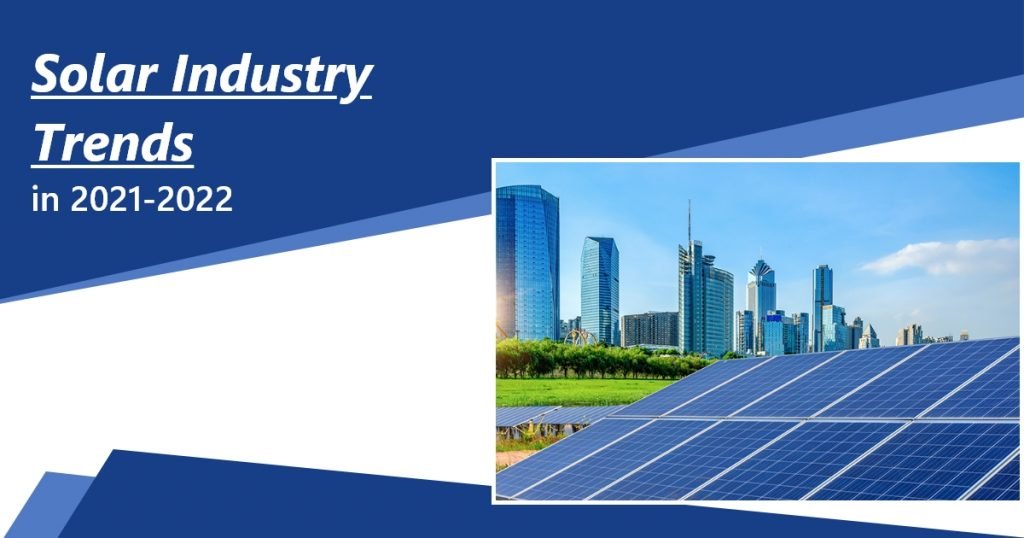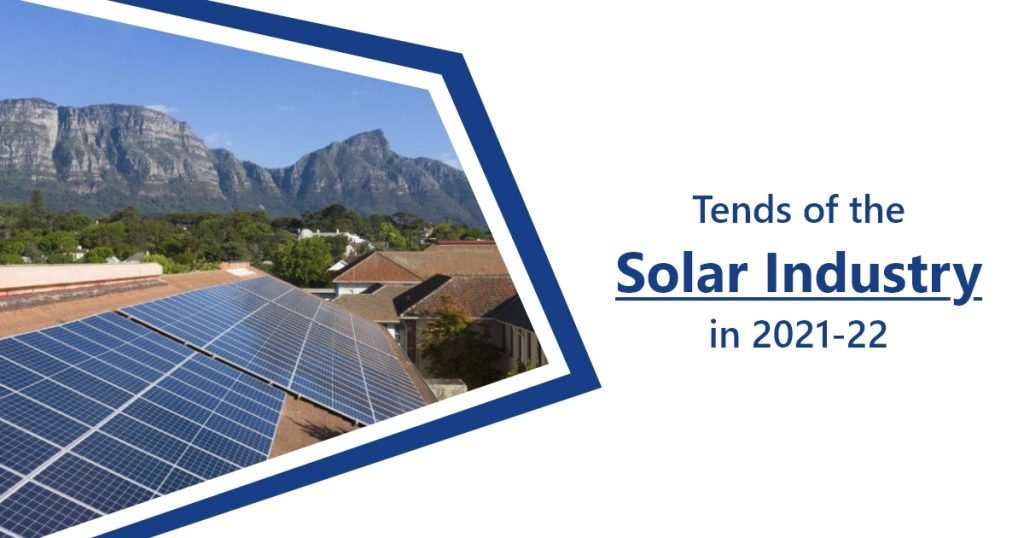Solar Industry Trends in 2021-2022.

Companies are adapting to the growing need for cost-effective forms of sustainable energy solutions, which is driving the development of solar energy system efficiency software technologies. Utility management software has given a mechanism for more organizations to incorporate energy-efficient measures into their business models.
Solar energy technology is one such example, which has grown in popularity across a wide range of industries. It enables businesses to make use of sustainable, energy-efficient sources in order to save money and energy. Renewable energy and utility system software is becoming more widely available and affordable, allowing businesses to take advantage of the solar power industry’s advantages.
Tends of Solar Industry in 2021-22

Technological advances in solar energy & utilities software are helping companies keep up with the growing trends.
Some of them are such as follows :
- Focus on energy storage systems as utilized with renewable energy technologies
Energy storage systems are predicted to be an important component of future technologies for solar industry trends and other renewable energy sources. Energy must be stored in an efficient manner in order to endure weather conditions and remain in a long-term storage system. To boost access to alternative energy, a cost-effective solution is also required. An emphasis on building effective energy storage systems to fulfill these demands will undoubtedly be a trend in energy technology within energy and utilities system software and energy efficiency software.
Also Read – The Future of Solar Power Energy in Los Angeles, California – What To Expect?
- Digitalization and Artificial Intelligence
From production and infrastructure to end-user devices, all aspects of the solar power system will be digitalized by solar industry trends 2021-2022. The renewable energy business, which uses digitally controlled robots and drones to power the world, relies on inspections to maintain safety standards; this takes a lot of time and effort.
Machine learning, such as through micro-grid controllers and artificial intelligence, is one trend to watch as new technologies arise to suit the expanding needs in the solar power energy business. Get Solar Installation in Fresno.
- Utilizing ponds as a solar energy source
Commercial uses for floating photovoltaic panels, also known as Floatovoltaics (FV) or floating solar systems, are growing. These large-scale solar panel devices create large-scale power by floating atop ponds or wastewater holding facilities.
- Efficiency like never seen before
solar industry trends, like any other technology, show a small boost in efficiency every year. In most modules, the average panel conversion efficiency has increased from 15% to well over 20% this year.
Okay, that may not seem like much, but when multiplied over the lifetime of a panel, that 5% efficiency bump dramatically enhances your ROI and helps you pay off the upfront installation cost much more quickly. Most silicon-based solar panels pay for themselves in less than two years. Payback period has been lowered to less than 1.5 years, thanks to efficiency ratings of more than 20%.
- Blockchain
With mixed outcomes, blockchain is a method of facilitating and recording energy transactions. At the same time, the year 2021 holds promise for energy customers looking to develop blockchain-based solutions within the current regulatory framework.
It’s a fantastic method to conserve energy in the future by lowering transaction costs, facilitating automation, and generating new money for distributed energy system owners.
- Solar power becomes more affordable.
Solar power has become more economical over the years, owing to laws that encourage its use. Solar energy had historically low costs last year, and it is currently the cheapest source of electricity in some parts of the world, according to the International Energy Agency (IEA).
- Grid parity with traditional sources of energy
Renewable Energy Market Update sources were historically prohibitively expensive for businesses to implement. This has altered as a result of emergency technology and the tendency of enterprises exploring alternative energy sources. Some energy sources, such as solar and wind power, are now available through innovative technology solutions that offer organizations with energy that is equivalent to traditional types of energy while also being more cost-effective.
- Solar-powered EV chargers
When it comes to electric vehicle chargers, expect one of the most desired features for solar and battery systems to be EV charging capability.
An electrical vehicle charger can be powered by the same 40-amp backfeed circuit breaker used for a normal solar installation. In fact, several new inverters feature a dedicated EV charging connection, lowering costs and simplifying wiring, permitting, and controls for solar contractors.
Also Read – Factors Affecting the Solar Industry – You Should Know.
Final Thoughts-
Solar power technology is rapidly advancing across the globe, and in the not-too-distant future, practically every country will have a tale to tell about the myriad advantages of becoming solar. Solar energy adoption will aid the development of other areas of the economy, such as the electronics industry, resulting in a large number of job possibilities. Contact Solar companies in California, to get your own system now.